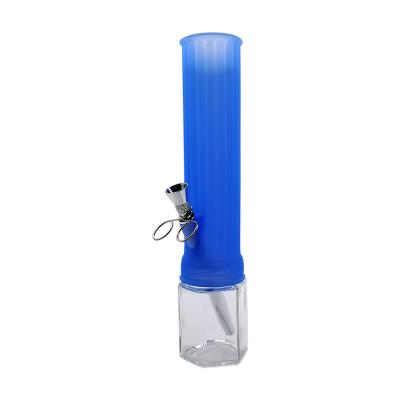How Many E Cigarettes Hits Equal One Cigarette? Uncover the Facts
E-cigarettes have become increasingly popular as an alternative to traditional smoking, offering users various flavors and reducing harmful emissions. As consumers transition to these devices, understanding how many e-cigarettes hit equal to one cigarette is crucial for managing nicotine intake and reducing dependence on tobacco products. This inquiry also highlights the need for comprehensive knowledge about e-cigarette mechanics, nicotine absorption rates, and the types of e-cigarettes available on the market today.
Understanding E-Cigarette Mechanics
Basics of E-Cigarettes
E-cigarettes, unlike traditional cigarettes, utilize an electronic mechanism to vaporize a liquid solution known as e-liquid or vape juice. This liquid typically contains a mixture of propylene glycol, vegetable glycerin, flavorings, and nicotine. When activated, the e-cigarette heats the e-liquid to produce an aerosol that users inhale, providing a familiar experience reminiscent of traditional smoking. Due to various power settings and atomizer options, e-cigarettes offer users customizable options to enhance their vaping experiences and control nicotine consumption.
How Do E-Cigarettes Work?
E-cigarettes work through a relatively straightforward process. When the user draws on the device, a sensor activates the heating element, often referred to as an atomizer. This component is responsible for converting e-liquid into vapor. Advanced e-cigarettes, like CSP's EHV23010 and EHV23006, incorporate features allowing users to adjust wattage levels, controlling vapor production and, consequently, nicotine intake. The ability to modify settings provides users with a tailored smoking experience, accommodating both novice and experienced vapers.


Types of E-Cigarettes Available
There are several types of e-cigarettes available on the market today. These include disposable e-cigarettes, pod systems, and advanced personal vaporizers (APVs). Disposable e-cigarettes are convenient and easy to use but have limited customization options. Pod systems offer a more versatile approach, allowing users to swap flavors and nicotine strengths. Lastly, APVs provide users with the latest technology and features for enhanced customization.
Comparing Nicotine Delivery: E-Cigs vs. Traditional Cigarettes
Nicotine Absorption Rates
One crucial aspect of understanding the relationship between e-cigarettes and traditional cigarettes is the comparison of nicotine absorption rates. Studies have demonstrated that traditional cigarettes typically deliver nicotine to the bloodstream within seconds due to the combustion of tobacco, resulting in rapid absorption. In contrast, e-cigarettes tend to deliver nicotine at a slower rate, which can vary depending on the device's power and the user’s vaping technique.
Compared to Traditional Cigarette Nicotine Content
The nicotine content in traditional cigarettes can range significantly, usually between 8 to 20 milligrams per cigarette, depending on the brand and type. E-cigarette nicotine content, however, varies widely due to differences in e-liquids, which are available in various concentrations, typically ranging from 0 to 50 milligrams per milliliter. Users may choose lower nicotine concentrations to gradually reduce their intake or higher concentrations for a more satisfying experience. Understanding these differences allows users to determine how many e-cigarette hits may equivalently match the nicotine delivery of a traditional cigarette.
Factors Affecting Nicotine Intake
Several factors can influence the amount of nicotine a user absorbs through e-cigarettes compared to traditional cigarettes. The user’s vaping style, including the duration and intensity of the puffs, can greatly affect nicotine intake. Additionally, individual differences such as metabolism, lung capacity, and tolerance to nicotine play a role.
In conclusion, understanding the dynamics of e-cigarettes compared to traditional cigarettes can significantly benefit users aiming to manage their nicotine consumption. Through the analysis of e-cigarette mechanics, nicotine absorption, and the effects of device settings, users can make more informed decisions regarding their smoking habits. Brands like CSP offer innovative e-cigarette models like the EHV23010 and EHV23006, further enhancing the vaping experience with advanced technology and versatility.
Calculating Equivalent Hits: Empirical Insights
General Guidelines for Equivalence
When considering the equivalence of e-cigarette hits to traditional cigarette puffs, several factors must be taken into account. Users should focus on both nicotine concentration in the e-liquid and the delivery system's efficiency. Understanding that e-liquids vary significantly in nicotine strength is paramount. For instance, if a user generally smokes cigarettes with a higher nicotine content, they may need to adjust the strength of the e-liquid used to mirror that consumption. Empirical research often indicates that a higher number of e-cigarette hits may be required to achieve a similar nicotine effect compared to smoking a single traditional cigarette.
Real-World Variability Factors
Device Efficiency
The efficiency of the e-cigarette device plays a crucial role in the overall vaping experience and nicotine delivery. Devices like the CSP EHV23010 and EHV23006 are engineered for optimal performance, enhancing vapor production through advanced heating techniques. The wattage settings also contribute substantially; higher wattages generally produce more vapor and, subsequently, more nicotine delivery per hit. Users may find that a more efficient device reduces the number of hits needed to satisfy their craving compared to less efficient models. Understanding these device parameters can help users tailor their experience and manage their nicotine consumption effectively.
User Behavior and Consumption Patterns
User behavior greatly influences how many hits of e-cigarette vapor correspond to one traditional cigarette. Consideration should be given to the vaping technique, including the duration and intensity of each draw. For instance, habitual smokers may take longer or larger puffs from a traditional cigarette, which translates differently to e-cigarettes. Additionally, the frequency of hits between traditional and e-cigarettes varies from person to person due to personal habits and preferences. Users who are accustomed to quick puffs may struggle to reach the same nicotine satisfaction with shorter, lighter draws from an e-cigarette.
Health Implications of Nicotine Consumption From E-Cigarettes vs. Traditional Cigarettes
Short-term Effects on the Body
The short-term effects of nicotine consumption can vary widely between e-cigarettes and traditional cigarettes. Traditionally, the inhalation of cigarette smoke introduces not just nicotine but numerous harmful chemicals into the body. In contrast, e-cigarettes vaporize e-liquids, reducing exposure to many of these harmful compounds, and resulting in fewer immediate adverse health effects. However, users may still experience some physiological effects like increased heart rate and tension, albeit these may be less pronounced compared to traditional methods. Understanding these effects helps users evaluate their health choices and the consequences tied to nicotine consumption.
Long-term Health Risks
The long-term health risks associated with e-cigarette usage remain a topic of ongoing research. While e-cigarettes are generally considered to be less harmful than traditional smoking, there are still concerns regarding chronic exposure to nicotine and other constituents of e-liquids. Regular monitoring of health metrics such as lung function and cardiovascular health is advisable for users. Additionally, comparative studies indicate that while users of e-cigarettes may experience fewer tobacco-related health issues, they are not entirely free from risk, emphasizing the importance of ongoing research and personal choice in smoking alternatives.
Monitoring Health Metrics
Regular monitoring of health metrics is crucial for users transitioning from traditional cigarettes to e-cigarettes. Health practitioners often recommend that users pay attention to respiratory and cardiovascular indicators to assess the effects of nicotine consumption over time. Employing such monitoring can provide insights into whether e-cigarette usage is having unintended health impacts, guiding users to make more informed choices in their nicotine consumption journey.
Comparative Studies and Findings
Comparative studies between e-cigarettes and traditional cigarettes contribute valuable information regarding their respective health implications. Research typically suggests that while e-cigarettes present a reduced risk profile, they do not eliminate health risks entirely. Continuous evaluations of user habits, nicotine absorption, and health outcomes will refine current understanding and provide transparent insight into long-term usage implications. Findings from these studies underscore the need for consumers to approach both smoking methods with an informed perspective, balancing satisfaction and health considerations.
Practical Considerations for Users Transitioning from Smoking to Vaping
Strategies for Measuring Intake
When transitioning from smoking to vaping, it is important for users to implement effective strategies to measure their nicotine intake. A thorough understanding of e-liquid nicotine concentrations is essential, as they can vary significantly. Users can commence by determining their typical cigarette consumption and the nicotine content they regularly use. This calculation will guide them in selecting the appropriate e-liquid strength to mimic their former nicotine satisfaction.
Additionally, users may consider keeping a journal or using apps designed for tracking vaping habits. Logging each e-cigarette hit along with the time and duration can provide insights into their daily nicotine intake and patterns. This practice allows users to pinpoint when cravings typically occur, enabling them to strategize their consumption more effectively. Furthermore, pacing their intake by taking fewer hits over time can help users gradually reduce their dependency on nicotine.
Tips for Reducing Dependency on Nicotine
Breaking free from nicotine dependence can be challenging for many users as they transition to vaping. A gradual reduction in nicotine strength is one effective method to lessen dependence over time. This can involve alternating between different e-liquid concentrations or switching to nicotine-free options. By slowly decreasing the amount of nicotine inhaled, users can help their bodies adjust without experiencing severe withdrawal symptoms.
In conclusion, users transitioning from traditional cigarettes to e-cigarettes must consider practical strategies for measuring intake and reducing nicotine dependence. By discerning nicotine strengths, monitoring their habits, and adopting various coping mechanisms, individuals can make substantial progress toward a healthier lifestyle. CSP's innovative models, like the EHV23010 and EHV23006, equip users with an array of features to enhance their vaping experience as they navigate this transition, fostering a well-informed and satisfying shift away from traditional cigarettes.



